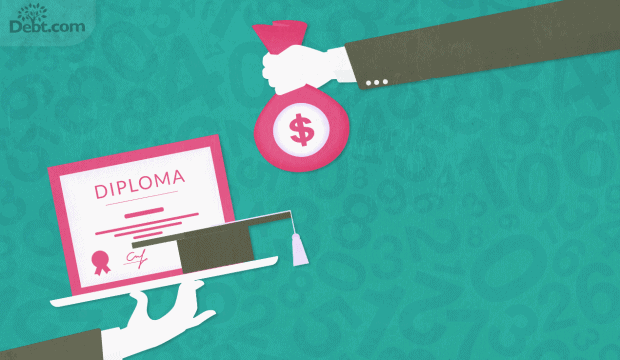Biden’s student loan forgiveness plan was struck down. Federal student loan payments are resuming October 2023.
Learn about important latest measures from the U.S. Department of Education to help borrowers as interest accrual and monthly student loan payments are set to resume.
Read the updates »
REPAYE offers the same low monthly payments as PAYE to more student loan borrowers, but there’s a catch.
Federal repayment plans are the government’s way of acknowledging crushing student loan debt and the urgent need for relief. So, they created a range of programs to fit different borrower situations and goals. There are plans that help the borrower pay off debt quickly to minimize costs. Then there are hardship-based plans that help borrowers lower their payments so they can avoid default.
Of all the hardship-based plans, Pay as You Earn (PAYE) was the best for achieving low monthly payments. In most cases, it caps payments at around 10% of the borrower’s adjusted gross income; in some cases, when a borrower faces extreme financial hardship, it drops the payments to $0. The only problem was that not everyone could qualify for the program.
In 2015, President Obama continued efforts to expand student debt relief with Revised Pay as You Earn (REPAYE). The program offers many of the same benefits as PAYE but makes them accessible to more borrowers. However, REPAYE isn’t the same as its cousin; in fact, the changes are significant. Here is what you need to know.
How Revised Pay as You Earn Works
- First, choose the federal student loans you wish to include in the program; this doesn’t apply to private loans, and all loans must be current. You can include any of the following:
- Federal Direct Loans
- Stafford Loans
- Graduate PLUS Loans
- Federal Direct Consolidation Loans (which allow you to roll in other debts, as long as you didn’t include a Parent PLUS loan)
- The loan servicer will verify your discretionary income to see if you qualify. To calculate discretionary income, subtract 150% of your state’s poverty guideline for your family size from your adjusted gross income.
- If you qualify, the interest rate is set by taking a weighted average of the loans you include in the program; this program will not significantly reduce your interest rate.
- The term (length) of the program depends on your graduate level:
- If your loans were all for undergraduate study, the term is 20 years
- For graduate or professional study, the term is 25 years
- Once enrolled, you must recertify your income and family size each year; as a result, your payments may change each year if your income changes.
If you still have balances left after 20 or 25 years, they are forgiven without penalties as long as you made all the payments.
What’s the catch with REPAYE?
The main catch comes with any significant increases in your income. If your income is below the federal poverty line in your state for your family size, your payments drop to zero. That’s good.
When your income is more than 150% of the federal poverty line. In this case, your payments can be higher than what you’d pay on a standard repayment plan. Instead of saving money, you end up spending more. This only happens when you reach a point at which the federal government considers a stable income.
Note that there is no penalty for switching repayment plans. If you get into REPAYE and then your income increases, you can change to standard or graduated repayment. Don’t assume that Revised Pay as You Earn will always give you the lowest payments possible.
Annual income certification
Revised Pay as You Earn requires annual income certification. If you don’t recertify on time, they kick you out of the program and switch you to an alternative program. This is equivalent to a standard plan. The plan sets your payments at an amount necessary to repay your debt in full within 10 years of starting alternative repayment OR the end of your original REPAYE, whichever comes first. That could lead to a big hike in your payment and puts you at risk of default.
You might trust that your loan servicer will let you know when you need to recertify. However, federal loan servicers aren’t exactly known to provide the best customer service. It’s entirely possible that your recertification date can pass without your prior knowledge.
REPAYE: the lowest-cost option if you’re struggling
Despite those two catches, REPAYE is a good federal loan repayment plan, especially if you face income challenges. Entry-level income these days is a drop in the bucket compared to the debt that most students graduate with, so an affordable plan with caveats is better than no plan at all. (Note that if you don’t choose a plan before your repayment period starts, they automatically enroll you in the standard plan.)
If you don’t have enough income to repay your loans on a standard plan, REPAYE can provide a significant benefit. Make sure you stay on top of recertification or find a middleman – student loan debt relief companies basically act as a go-between for you and the servicer. If you hire one, they’re more likely to help you stay on track and address challenges as they arise.






